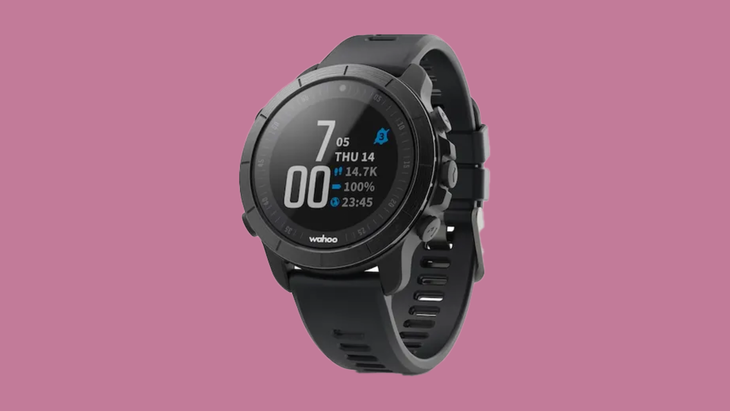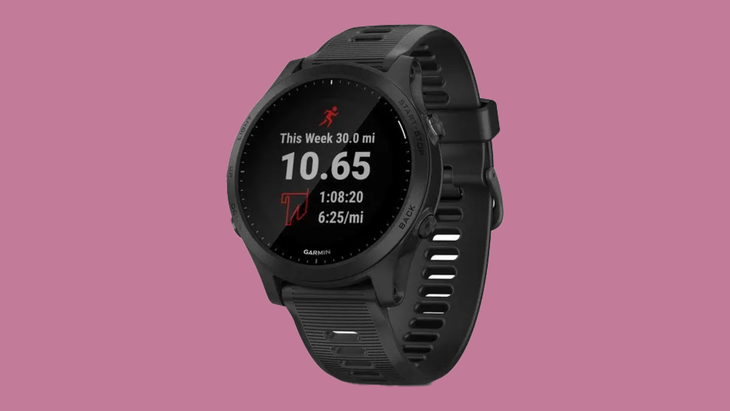Products You May Like
Get access to everything we publish when you
sign up for Outside+.
Of all the gear and gadgets available in running, a reliable watch is one of the most important.
While not every run has to be logged on a watch (in fact, it’s good to disconnect every now and then), a trusty time-keeper can help you track your progression over time, log hard-earned splits, and of course, record key metrics such as distance and elevation gain.
It seems watches get “smarter” every year with features such as race finish time predictions, suggestions for recovery time between workouts, and customizable data screens. Each watch, whether it be Garmin, Wahoo, Suunto, Polar, Coros, or another brand, brings something unique to the table. Here, we dive into market-newcomer the Wahoo Elemnt Rival and also revisit an oldie-but-goodie: the Garmin Forerunner 945.
The Wahoo Elemnt Rival | $330

Wahoo has long been known for its innovative technology in the cycling space; they were one of the first companies to launch a “smart” trainer for bikes. In November 2020, they entered the watch space with the introduction of the Elemnt Rival. The watch was designed to satisfy runners, cyclists, triathletes, and everyone in between.
The Rival, which clocks in at 53 grams, lists for $330 (but as of publishing, is on sale for $250). With GPS Mode enabled, the watch has a battery life of 24 hours, without GPS, 14 days. It does a great job of thinking through typical pain points runners and multisport athletes might have such as auto-laps not matching a race’s mile markers, difficult-to-see screens, and multiple devices running at once with numerous data screens (i.e. a treadmill). We’ll get into how the Rival addresses these in just a minute.
On the flipside, the Rival could use a bit more love in its hardware design and education around how to leverage the watch’s features. For example, the “lap” button is the top right button for the Rival. As picky as this is, it’s not the easiest button to hit when lapping in the middle of a tough workout (Garmin’s “lap” button is the bottom right, much easier when you consider how your arms and wrists naturally sit while striding).
The watch relies heavily on the ELEMNT companion app. You must use the app to program new data screens, change the backlight mode, and manage autolap for any given activity. It’s not ideal, especially if you dislike using your phone or having it on you during a workout.
RELATED: Bras for Girls Gears Up to Equip and Empower More Girls Than Ever
What We Liked
As noted above, the Rival does have some neat features, one such being the “snap” ability. This capability allows a runner to “snap” ahead or behind to match the mile markers during a race. As we all know, sometimes our watch’s mile is a bit ahead or behind a race’s actual marker. The Rival allows you to stay in lock-step with a race’s mile posts without doing any mental math to play catchup.
Wahoo’s watch also has a great display. You can even leverage your preferred set of buttons to toggle “Perfect View Zoom” on workout pages, allowing you to get a larger, more visible data page for those whose eyes struggle to see the tiny numbers mid-run.
Plus, via the ELEMNT app, you can opt to turn on “Auto Light Mode,” which will automatically adjust the watch’s backlight according to the brightness (or darkness) surrounding you. The auto-light adjustment is extremely quick; the watch immediately registered the dark of running through an underpass and then returned to a white background as soon as the covering of the underpass was behind me.
The Rival also has what it calls broadcasting abilities. It can share its real-time data with a compatible treadmill, bike computer, or third party app. No more glancing between your watch screen and the treadmill timer to make sure the two are in sync.
A final highlight of the Rival is one focused on safety. With the ELEMNT app, runners can create a unique tracking link that will allow a loved one or friend to know where you are as you are running. Only those with the unique link will be able to follow along. For those of us who run early in the morning or late at night, this can provide peace of mind for our family, friends, and most importantly, ourselves.
In summary, the Rival has some interesting features that are unique to the Wahoo brand. It’s the perfect watch for someone newer to the sport who is looking for a solid watch with great connectivity. However, the watch could use a bit more finessing, a bit more intuitiveness for users, and a permanently lower price point to make it a truly enticing piece of equipment for runners.
Garmin Forerunner 945 | $600

The Garmin Forerunner series is arguably one of the most popular sets of watches among runners and endurance athletes. From the Garmin Forerunner 945’s integrations with Spotify, Garmin Connect, Training Peaks (which the Rival also has), and Garmin Pay to 36 hours of battery life in GPS mode and a weight of 50g, it seems the Garmin Forerunner 945 has thought of nearly everything one could want from a smart athletic watch.
Perhaps the biggest downside is the price. The Forerunner 945 will cost you $600 before any taxes or shipping. That’s a lot of dough. Like, a few race entry fees worth of dough.
The Forerunner 945, despite being both a great running and triathlon watch, lacks some of the innovative features of the Rival. It does not have auto-light adjustment abilities and the Rival’s cool “snap” feature is not present in the Forerunner. Things to think about depending on your training and racing style and needs.
RELATED: How Strava Fame Became a Burden for Molly Seidel
What We Liked
One of the best parts of the Forerunner 945 is it can transition seamlessly between being a data-filled run companion and daily-use smartwatch. The Forerunner 945 features a relaxation and breath timer for those “I need a moment” moments, allows users to check the weather and play music, all from the watch’s interface.
The Forerunner 945 helps those of us who are directionally challenged, as well. Garmin has covered their bases when it comes to mapping, and the 945 has colored maps, GPS, GLONASS, and Galileo tracking abilities, turn-by-turn direction options, and a route suggestion feature that recommends nearby running routes based on distance.
Whether you’re traveling for work, recently moved to a new location, or are trying to get in a shakeout run before a race, Garmin wants to be sure you never turn down a dead-end road again.
Finally, the Forerunner 945 captures the essence of what being a “smartwatch” for runners truly means. The folks at Garmin were thorough and accurate in thinking through what might matter to runners in this category, and they nailed it. The Forerunner 945 shares training effect data, training load data, recovery time suggestions, intensity minutes, and recommended daily workouts. For the athlete who wants to dig deep into how their running is affecting their mind, body, goals, and training plans, the Forerunner 945 will satiate a runner’s inner data geek and more.
If you can get over the sticker shock of the $600 price tag, the Garmin Forerunner 945 is perfect for the data-oriented, veteran runner who needs a watch that flawlessly moves between daily workouts and daily life and wants to keep track of their every step, literally.
RELATED: The Best Trail Running Shoes for Spring and Summer 2022
